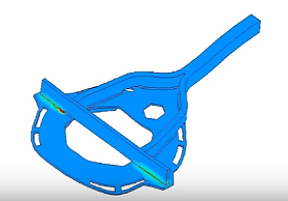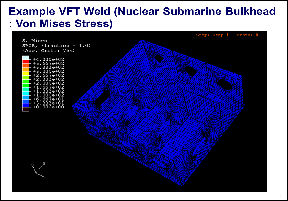Emc2 has developed several unique weld modeling solutions for residual stress control, distortion control and microstructure control that fabricators of large welded structures have used to save both time and money in the fabrication process. We are experts in the following areas of weld modeling:
- Weld residual stress/distortion/microstructure simulations
- Weld fracture in the heat-affect zone (HAZ) and local brittle zone (LBZ)
- Hydrogen cracking and stress corrosion cracking of welded structures
- Numerical simulation of welding and other joining processes
- Models developed for nozzles in pressure vessels, girth welds and repair welds
- Process modeling – modeling fabrication process using mathematics based numerical tools
In addition to utilizing commercial FE packages, Emc2 has a library of in-house developed user subroutines for aiding in these calculations. A brief summary and description of representative weld modeling solutions are provided below.
Reliability and Welded Structures
Welding residual stress (WRS) can be a key contributor to weld cracking in both construction and service. Welded repairs (depth, length, location) can have a marked effect on the WRS field and the uncertainty associated with this must be identified and accounted for. Emc2 has developed its own proprietary computer codes to accurately simulate residual stress build-up in construction and repair welds.
Microstructure and Distortion Control
Distortion control is also predicted for optimizing construction procedures for large welded structures, which allows for more economic production in heavy construction equipment, ships, offshore platforms/rigs, and other large equipment.


